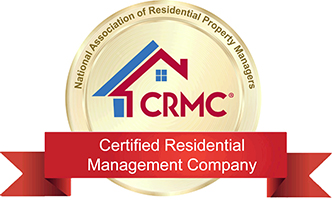
Selling a tenant occupied house can prove to be quite challenging. In general, I do not recommend that a house be sold with a tenant in it. However, there are some unique circumstances where it must be done. But if you’re absolutely convinced that you must sell your house with a tenant in it and you cannot be convinced otherwise, here are 7 tips to help you with the sales process.
1. Consider the tenant’s perspective
To the tenant, the sales process is a major inconvenience and headache. If you’ve ever lived in your own home while selling it, you know how you need to be prepared to show the house with little notice, and ideally, without you in it. So you had to make plans to be out of the house for 30 – 60 minutes at a time at the drop of a hat. You probably also spent a lot of time keeping the house neat and tidy for the same reason. As the seller you were willing to tolerate this inconvenience because it was a necessary evil to accomplish your bigger goal of moving to your new house. Now put yourself in the place of the tenant, with all the inconvenience but none of the reward. Plus, the end result means the tenant has to find a new place to live, despite the fact that they probably don’t want to move. So their maximum cooperation leads to their impending dislocation and more inconvenience. From a tenant’s perspective there may be more reasons not to cooperate with the sales process than to cooperate. You need to find a way to gain the tenant’s cooperation.
2. Incentivize the tenant
Lead with the carrot, not with the stick. This is a good mantra for leading the tenant to the behavior you seek. Brainstorm different ways that will make it beneficial for the tenant to be cooperative with the sales process. This can range from offering them a lump sum of $X if the house is sold within the listing period, to offering the tenant $X per showing. Whatever you choose, make sure you are clear about what requirements the tenant must meet to be eligible for payment and when payment is to be made.
3. Put the tenant incentive in writing with the proper details
The first mistake of the seller is making only a verbal agreement. This leads to a lot of “he said, she said” down the road. Be sure to get any agreements in writing. Take the time to make sure the agreement is well defined. I’ve dealt with a situation where the seller agreed to pay the tenant, “$X for each showing.” This simply isn’t sufficient language. The seller was later upset that although the tenant was cooperative in showing the house, the condition of the interior of the house was not satisfactory to the buyer’s agent or potential buyer. So the seller did not want to pay the tenant for the showings. It also did not define when the tenant was paid. As you can imagine, this led to many more problems. Whatever you agree to, think it through in detail, put it in writing and have all parties sign and date the agreement.
4. Provide proper notice for showings
In the state of Arizona, we are required to provide proper legal notice to tenants prior to entrance of the property. Legal notice must be served 48 hours in advance and can only be achieved in one of two ways, personal service or certified mail. Posting a letter on the front door is not proper legal notice. The exception to this requirement is if an agent calls or emails the tenant and the tenant gives a positive response to the inquiry. The tenant must respond positively to the inquiry with a return email or return phone call. For example, if I call a tenant and say, “Hi Bob, this is Steve with Blue Fox Properties, I’d like to show your home tomorrow at 3:00, is that okay?” and Bob says “Yes,” I am okay to show the house tomorrow at 3. However, if Bob does not answer, I cannot simply leave a voice message and show up at 3 tomorrow. That is not okay. The act of sending an email or leaving a voicemail does not serve the legal notice requirement. Do you see the difference?
5. Do not use a keysafe
The requirement of giving proper legal notice to the tenant prior to visiting the property is why I do not recommend you place a key safe on a tenant occupied house. If the showing agent doesn’t understand the legal notice requirements, the “call and show” process that most agents are familiar with can potentially lead to all kinds of legal problems for the showing agent, the listing agent and the owner of the property.
6. Be considerate of the tenant
Understand that although you may have done everything up to this point to make the tenant comfortable and cooperative, it’s a stress full time for them too. Do the best you can to be sensitive to their situation and this will lead to a better outcome for everyone.
7. Expect problems, but stay calm
I can guarantee you that you will hit some bumps in the road, but like all things in real estate, you need to take those in stride. The question isn’t if a problem will arise, but when. So if everything is going smoothly, expect something to pop up that will require your calmness to take over.
If you must sell a tenant occupied house, give these 7 steps a try. I think they will help you get to the closing table with fewer problems than had you not taken this approach.





